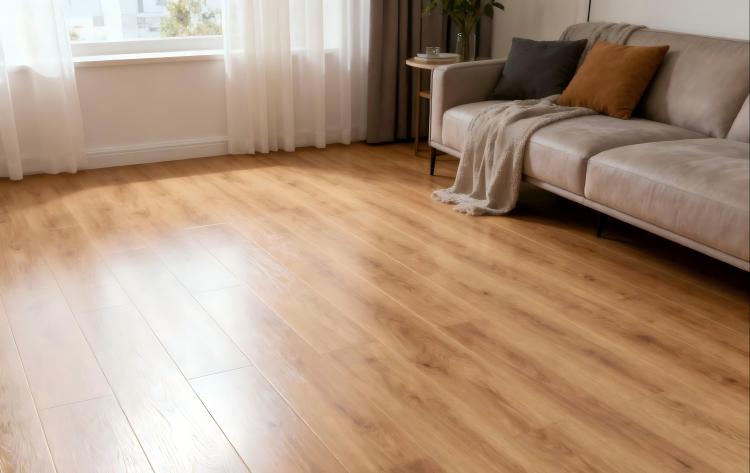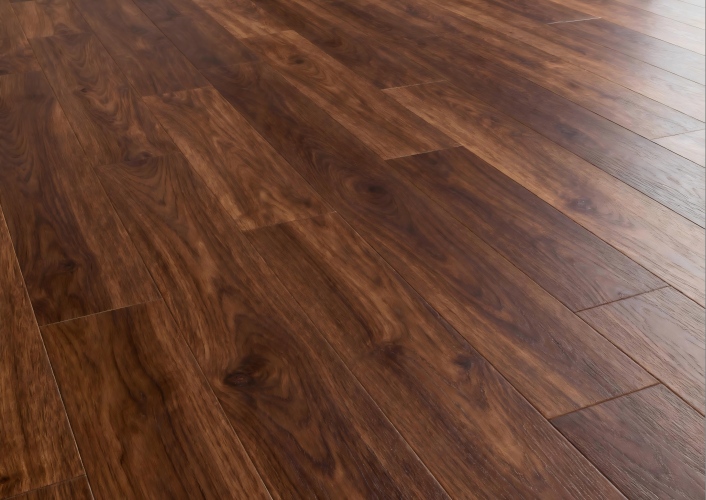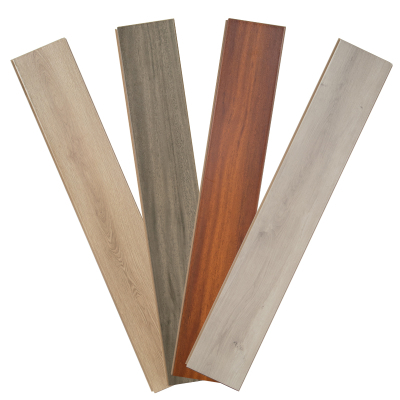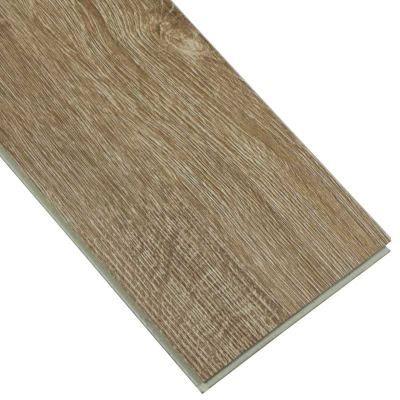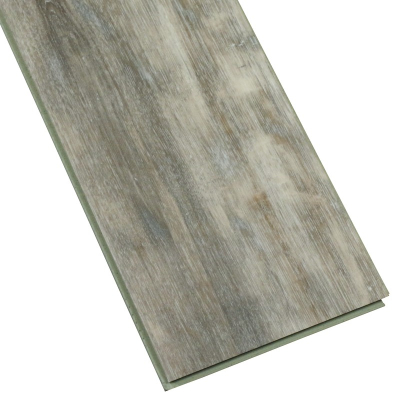How do I care for my laminate floors to keep them looking clean and shiny?
Core philosophy: Prevention is better than cleaning, and the right approach is the best approach
Maintaining the cleanliness and luster of Bamboo Laminate Flooring does not rely on powerful chemical reagents or expensive care products, but is based on a "trinity" system of daily prevention, correct cleaning methods and regular maintenance. Many people have misunderstandings about floor care and use incorrect methods, which can instead permanently damage the protective layer on the floor surface, causing it to lose its luster, and even become dull and mottled.
Part One: Understanding Your Laminate Flooring - What Exactly Is It?
To care for it properly, one must first understand its structure. Laminate flooring is not solid wood. It is usually composed of four layers:
Wear Layer: This is the "armor" of the floor. It is a transparent coating of Aluminum Oxide, extremely hard, responsible for resisting scratches, wear and stains. The luster of the floor comes from this layer. All our cleaning and maintenance work is aimed at protecting this layer from being damaged.
Decor Layer: This is a sheet of paper printed with high-definition wood grain, stone grain or other patterns, which determines the appearance of the floor.
High-density fiberboard Core layer (HDF Core) : This is the main body of the floor, made of wood fibers and resin under high temperature and high pressure. It is extremely hard, but has a fatal weakness: it is afraid of water. Once a large amount of water seeps in, HDF will absorb water and expand, causing the floor to deform and curl at the edges, which cannot be repaired.
Backing Layer: The coating at the bottom, used to balance stress and prevent the floor from deforming due to moisture.
Professional conclusion:
Your goal is to protect the luster of the wear-resistant layer.
Your taboo is to avoid water from penetrating the core layer.
Any cleaning method that violates the above two points is wrong.
Part Two: Daily Cleaning and Prevention - The preparatory work for 80% of the workload
The best cleaning is to prevent dirt from accumulating. Professional domestic service providers and floor installers abroad generally believe that daily prevention is the most effective and effortless way to keep the floor looking good.
1.The first line of defense: Doormat strategy
High-quality doormats are placed both inside and outside all entrances. The MATS outside the house are used to scrape off most of the sand and mud from the soles of shoes. The MATS inside the house are used to absorb moisture and further clean the soles of shoes. This is the most crucial step in preventing abrasive dirt (abrasive dirt, such as sand grains) from entering the room, as these small particles are the "miniature sandpaper" that wears down the floor's luster.
2. Furniture protection: Floor MATS and rollers
Stick Felt Pads made of felt or soft cloth on the bottom of all furniture legs (chairs, tables, sofas, etc.). Regularly inspect and replace worn floor MATS. For office chairs with rollers, be sure to use Soft Wheel Casters specifically designed for soft floors like Best Waterproof Laminate Flooring, instead of ordinary hard rollers, to prevent them from scratching the floor surface.
3. Daily dust removal: Dry cleaning is mainly used
Dust and sand grains are the natural enemies of floor gloss. It is recommended to perform quick dust removal once a day or every two days on High Quality Laminate Flooring.
Recommended tools: Microfiber Mop or Dry Dust Mop. The ultra-fine fiber material effectively captures dust and hair through static action without scratching the floor.
Vacuum cleaner: A vacuum cleaner can be used on Laminate Flooring For Stairs and other areas, but ensure it is in hard floor mode (with the roller brush turned off). If the high-speed roller brush has stiff bristles, long-term use may cause fine scratches on the wear-resistant layer, reducing its shine.
4. Immediately deal with spills (spill)
This is the core of waterproofing. If any liquid (water, beverages, oil, etc.) spills on the floor, it must be wiped dry immediately with a soft and absorbent cloth or paper towel. Even water, if left for a long time, may seep through the gaps of the lock, endangering the core layer.
Part Three: Deep Cleaning - Correct Periodicity and Methods
When the floor has a sticky feeling or obvious stains, a deep cleaning is required. Please strictly follow the following steps:
1. Clean/Vacuum first
Before mopping the floor, all surface dust and sand particles must be thoroughly removed with a dry mop or vacuum cleaner. Otherwise, you are using a damp mop to "mix mud", and this mud will scratch the floor during the mopping process.
2. The "Golden Rule" for Mopping the floor: Damp Mop, Not Wet Mop
This is the most important principle. Your mop should be damp but not drip when mopping the floor. After immersing the mop in the cleaning solution, be sure to wring it out forcefully until you feel it is almost dry. You can try it with your hand. When the wrung-out mop touches the back of your hand, it only feels damp without any water marks.
3. Choice of cleaning agents: Less is More
First choice: Clear water. For most daily cleaning, a pair of clean water with a microfiber mop is more than sufficient.
If required: Specialized floor Cleaner (PH-Neutral Cleaner). Choose a ph-neutral cleaner specifically designed for laminate flooring. They won't leave sticky residues, which will attract dust, make the floor dirty again quickly and make it dull.
Do not use:
Steam Mop: High-temperature steam can penetrate the lock, damage the core layer and cause permanent expansion. All floor manufacturers will explicitly prohibit the use of steam mops in their warranty terms.
General-purpose cleaners, dishwashing liquid and soap liquid: They will leave thick residues, making the floor lose its luster.
Vinegar, ammonia water, polishing agent, waxing agent: Vinegar and ammonia water are acidic and alkaline respectively, which will slowly corrode the wear-resistant layer. Laminate flooring definitely does not need and should not be waxed or polished, as this will make it slippery and leave a hard-to-remove film layer.
4. Cleaning process
Spray a small amount of diluted detergent (strictly in accordance with the instructions) onto the mop instead of directly onto the floor. Mop along the direction of the floor tiling. In particularly dirty areas, you can spray more, but then use a very dry mop to mop again to remove the excess water.
5. Deal with stubborn stains
Oily substances: First solidify them with ice cubes, then gently scrape them off. Then gently wipe off the residue with a cloth dipped in a small amount of alcohol.
Lipstick, crayons and markers: Gently rub with alcohol as well.
Chewing gum and paint: First harden them with ice cubes, then scrape them off.
Blood, red wine, fruit juice, etc. : Wipe with a slightly damp cloth dipped in a small amount of neutral detergent.
In all cases, the area must be dried immediately with a dry cloth after treatment.
4.Part Four: Restoring and Maintaining "Shine" - The Truth about Glossiness
This is a very important concept: The "luster" of laminate flooring comes from its intact wear-resistant surface layer. When it becomes dull, it is usually not because of dust, but because the surface is covered with Micro-scratches or Residue of detergent Buildup.
If your floor becomes dull and lackluster
Diagnostic problem
If it's residue: The floor will feel a bit sticky and look grayish. The solution is to carry out a thorough rinse with clean water. Mop the floor one or two times with a very wrung out clean water mop. Change the water if necessary until all residues are completely removed. For severe cases, foreign professionals may recommend the use of Residue Remover, which is specially designed for removing floor residues.
If it is a minor scratch: This is a permanent damage and cannot be restored by cleaning. This can only be avoided through prevention (refer to the door MATS and furniture protection in Part Two).
Regarding "polish" for Thick Laminate Flooring:
There are some products on the market named "Laminate Floor Polish" or "Refresher". Their function is to form a temporary protective film on the floor to fill in minor scratches and increase light reflection, thus making the thick laminate flooring look brighter. Please be cautious before use:
First, check whether the warranty terms of the thick laminate flooring manufacturer allow its use.
Not all thick laminate flooring is suitable (especially textured matte surfaces).
It is only a temporary solution and needs to be reapplied regularly.
Before use, it is essential to ensure that the flooring is extremely clean with no residue at all; otherwise, the effect will be counterproductive.
True "shining" is the result of long-term meticulous care, not a one-off magic.
Summary: Professional care checklist for Thick Laminate Flooring
What to Do:
Place high-quality doormats at the door.
Attach felt protective pads on the legs of furniture.
Use a microfiber mop for daily dry dust removal.
Immediately clean up any spilled liquid.
When mopping the floor, use a well-wrung, slightly damp mop.
Use a neutral cleaner specially designed for thick laminate flooring and strictly follow dilution instructions.
Regularly inspect and replace worn furniture floor mats.
Don't do:
Don't uses a steam mop.
Don't use too much water.
Don't use soap, dishwashing liquid, vinegar, ammonia water or a general cleaner.
Don't wax or polish the floor.
Don't use a rough brush or scouring pad to scrub the floor.
Don't set the vacuum cleaner to carpet mode (with the roller brush on).
By following this "prevention first, correct cleaning" system derived from professional practices abroad, your laminate flooring can maintain a brand-new cleanliness and natural luster throughout its long service life.

